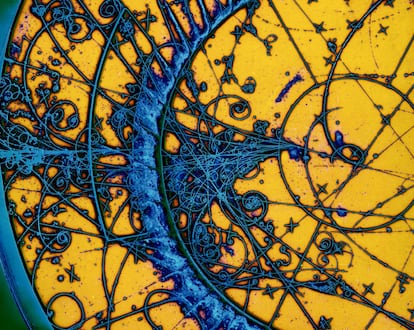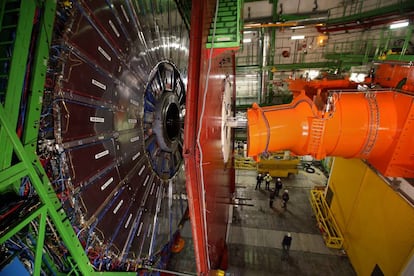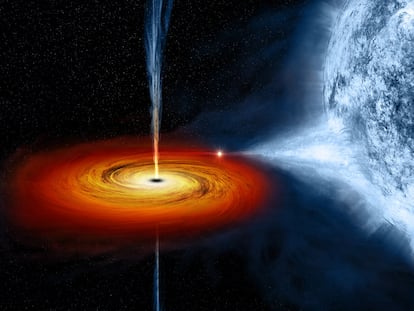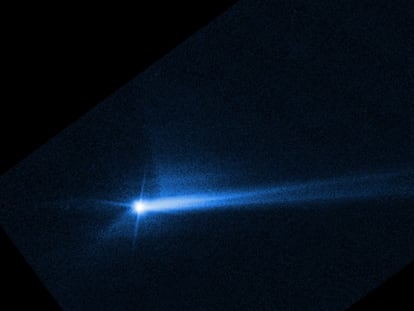According to the Big Bang Theory, we should not exist
The famous hypothesis cannot explain one fundamental thing: why matter and antimatter didn’t cancel each other out

We shouldn’t exist. By saying so, I’m not joining the doomsday prophets and regressionists who troll the internet proclaiming that the human race is the worst. No, I am talking about physics and why human existence is highly improbable. The Big Bang Theory, which tries to elucidate why the universe is the way it is, still cannot tell us why everything around us exists. Let me explain.
The universe likes to operate in Zen mode and maintain a yin-yang equilibrium where everything is preserved, even though it’s sometimes transformed into another state. From a certain perspective, there is no other way: what exists, exists, and will always exist in the universe, even if it does not always look the same.
Take thermodynamics, a branch of physics, which postulates that when two systems at different temperatures interact, their thermal states will attain an equilibrium in which a physical property — temperature — is homogenized. How can we test this at home? Just open a window on a cold day.
Equilibrium in the universe can be viewed from other perspectives. Although the human race hasn’t always looked the same, we have always lived in a variable equilibrium. Open the freezer and look at an ice cube. In that icy environment, water molecules are bound together in an equilibrium that forms a solid, crystalline structure (there are actually 18 types of ice crystal structures). Take an ice cube out of the freezer into a higher ambient temperature, and another equilibrium is attained when the molecules become liquid — a change of state has occurred. Something similar has happened several times to the universe when ambient temperatures caused it to change into another state with different properties.
Let’s leave physics examples found in the home and move on to more complex environments. Physicists in laboratories like Fermilab and CERN love to produce super-heated particles. Since temperature is motion, these labs can accelerate particles to incredible speeds, endowing them with unprecedented energy. For example, Fermilab accelerates particles using powerful magnetic systems with energy equivalent to about a million household light bulbs, or what a town of 20,000 might consume. This power can accelerate protons to speeds that differ from the speed of light by only a few ten-millionths, and makes them collide with fairly dense atoms like iridium to produce antiprotons.
Antimatter
Antiprotons are a form of antimatter, which is the same as matter, but with a reversed electric charge (and other reversed properties). All particles have an antiparticle, and the two self-annihilate upon collision to produce photons (and more particles in certain cases), releasing the energy given by the famous equation E=mc².
In all of human history, we have only created about one billionth of a gram of antimatter. Even though some antimatter is produced naturally by cosmic ray impacts, it doesn’t last and quickly annihilates itself by colliding with all the surrounding matter.
This is a key point: there is matter all around us. But we have found no significant quantities of antimatter anywhere, near or far. We have never seen a galaxy of matter colliding with a galaxy of antimatter — imagine the fantastic light show! But there is no such thing.
However, when the universe was young and extremely dense with temperatures about two billion degrees Celsius, according to the Big Bang Theory (the Sun’s core temperature is only 15 million degrees Celsius), there would have been continuous collisions between particles, and between particles and antiparticles, produced by one trillion times the energy level achieved by CERN. And so the system — the entire universe — should have maintained an equilibrium with an equal number of particles and antiparticles appearing and annihilating themselves continuously, and producing other particles like photons.

So why do we live now in a universe made of matter? A universe in equilibrium with the same amount of matter as antimatter should have self-annihilated, with only photons remaining. But it didn’t (thank heavens or thanks to the Universe itself!). Why did some matter survive? Or is the matter surrounding us actually antimatter? Whatever — same thing. So, while the Big Bang Theory can explain a lot of observable things in our universe, it can’t tell us why only matter exists and, by extension, why we exist.
The implications of a universe full of matter but with no antimatter are extraordinary. Was it because some quantum fluctuation produced an excess of matter in some part of the universe, the part that we know? This could have happened when everything in the universe was in a certain state of coexisting matter and antimatter, like the ice in our freezers. But the quantum fluctuation had to happen at the exact instant when the universe transformed into another state with very different properties, like when ice turns into water. Something very rare and fortuitous for humans must have happened along the way. Maybe inflation during that change of state caused the area of quantum fluctuation to become isolated from the rest of the universe.
The implication is that we call the universe is actually a “small” primordial bubble, and the universe is actually much, much larger than what we can observe, with areas totally inaccessible to us that are full of antimatter galaxies, stars, planets, and… life forms?! But think about it. We can’t see the boundaries of these bubbles, since we haven’t detected matter/antimatter mass annihilation anywhere. So it can’t be that simple.
We must conclude then that we shouldn’t exist — matter and antimatter should have self-annihilated when the universe was young. But in a lottery with one-in-a-billion odds (that’s another story), we hit the jackpot: the cosmic void was filled with matter. And here we are.
Sign up for our weekly newsletter to get more English-language news coverage from EL PAÍS USA Edition
Tu suscripción se está usando en otro dispositivo
¿Quieres añadir otro usuario a tu suscripción?
Si continúas leyendo en este dispositivo, no se podrá leer en el otro.
FlechaTu suscripción se está usando en otro dispositivo y solo puedes acceder a EL PAÍS desde un dispositivo a la vez.
Si quieres compartir tu cuenta, cambia tu suscripción a la modalidad Premium, así podrás añadir otro usuario. Cada uno accederá con su propia cuenta de email, lo que os permitirá personalizar vuestra experiencia en EL PAÍS.
¿Tienes una suscripción de empresa? Accede aquí para contratar más cuentas.
En el caso de no saber quién está usando tu cuenta, te recomendamos cambiar tu contraseña aquí.
Si decides continuar compartiendo tu cuenta, este mensaje se mostrará en tu dispositivo y en el de la otra persona que está usando tu cuenta de forma indefinida, afectando a tu experiencia de lectura. Puedes consultar aquí los términos y condiciones de la suscripción digital.
More information
Últimas noticias
Trump traveled on Epstein’s plane ‘many more times’ than previously thought, according to new documents
Venezuelan exiles in Madrid scramble to salvage Christmas plans after flight cancellations
Russian ultranationalism, inflamed by the killing of the hooligan commander ‘Spaniard’
The relentless struggle between factions deepens the Sinaloa war: bodies in coolers and a surge in homicides
Most viewed
- The low-cost creative revolution: How technology is making art accessible to everyone
- Christian Louboutin: ‘Young people don’t want to be like their parents. And if their parents wear sneakers, they’re going to look for something else’
- All the effects of gentrification in one corner of Mexico’s Colonia Roma
- Liset Menéndez de la Prida, neuroscientist: ‘It’s not normal to constantly seek pleasure; it’s important to be bored, to be calm’
- Christmas loses its festive spirit: ICE fears cast shadow over religious celebrations











































